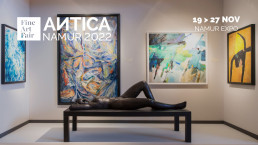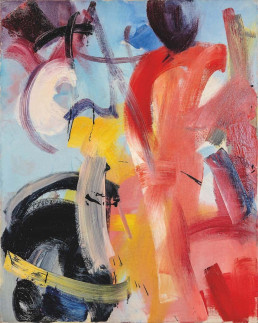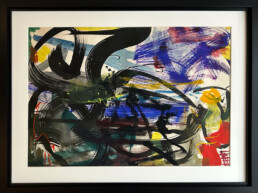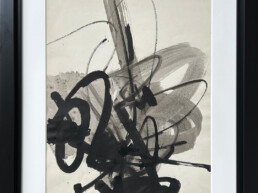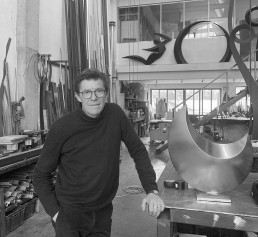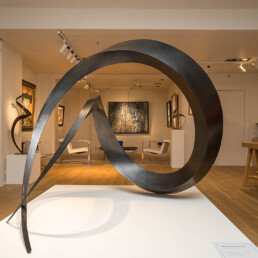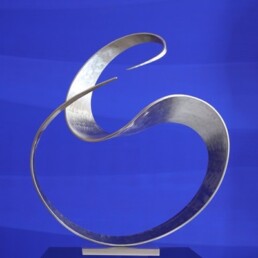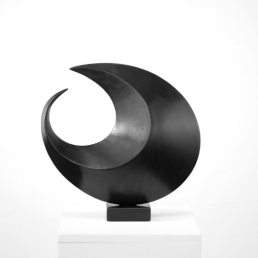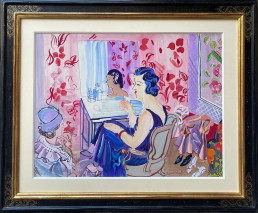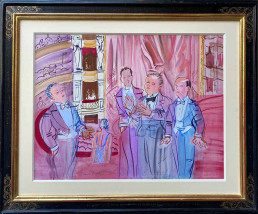MODERNE ART FAIR - From 19.10 to 22.10.2023
MODERNE ART FAIR 2023
From 19 to 22.10.2023
PLACE
PAVILLON 1 Booth110
Pavillons, avenue des Champs-Élysées, Paris 8e
from Place Clemenceau to Place de la Concorde
OPENING HOURS
Thursday 19th to Sunday 22nd October 2023
Daily from 11am to 8pm, Sundays closing at 6pm
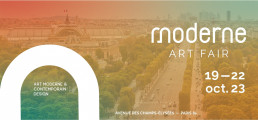
BRAFA Art Fair - From 01.29. to 02.05 2023
BRAFA ART FAIR 2023
From 01.29 to 02.05.2023
PLACE
HALL 3 STAND 75
Brussels Expo I Heysel, Palais 3 & 4 (entrée)
Place de Belgique 1, 1020 Bruxelles
OPENING HOURS
Every day from 11am to 7pm, Thursday, February 2nd closing at 10pm

ANTICA NAMUR 2022 - From 19 to 11.27.2022
ANTICA NAMUR 2022
From 19 au 11.27.2022
PLACE
Stand G19
Namur Expo
Avenue Sergent Vrithoff 2
5000 Namur
Belgium
PUBLIC OPENING
Weekdays: 1pm to 7pm Weekends: 11am to 7pm.
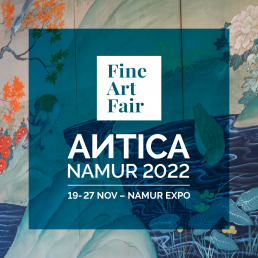
MODERNE ART FAIR - Du 20.10 au 24.10.2022
MODERNE ART FAIR 2022
From 20 to 24.10.2022
PLACE
LEVEL 1 Booth101
Place de l’Étoile
10 Avenue de la Grande Armée
75017 Paris
OPENING HOURS
Thursday 20th to Monday 24th October 2022
Daily from 11 a.m. to 8 p.m., Monday closing at 5 p.m.
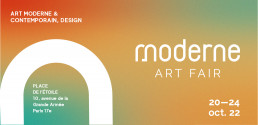
Jean MIOTTE - SOLO SHOW - To be discovered soon
A beautiful event on the work of Jean MIOTTE is in preparation! Specialist of the artist for many years, the Hurtebize Gallery wishes to put forward this pioneer of lyrical abstraction, recognized internationally.
Francis GUERRIER, the Nature-Sculpture
From a line of artists, from his grandfather to his two daughters, Francis Guerrier was born in 1964 in Marseille and lives today in his childhood home in Eygalières, which he has decorated with a huge studio bathed in light.
More than the mastery of artistic techniques, his family environment transmitted to him a strong sensitivity to art. But he waited until the death of his painter father Raymond Guerrier to be able to call himself an artist and he chose sculpture, turning his back on the painting practiced by the Guerrier family for two generations.
He left for Paris at the age of 19 and, the following year, began his creative activity with the architect-scenographer Pierre-Henri Magnin, who introduced him to the world of decor and scenography and whom Francis considered his master.
He got married and became a father at a very young age, which led him to create his own company for the creation of sets and scenography for events at the age of 25 in order to provide for his family’s needs more serenely. For ten years, in order to meet his clients’ wishes, he had to master many tools and media: video, laser, sound and light installations, but also construction materials, wood and steel. A rich experience but restrictive because it is time-consuming and limiting: he wants to expand his field of creation, give free rein to his imagination and no longer simply honor orders.
In 2000, at the age of 36, he sold his company and sailed for 4 months in the Mediterranean to discover the sites listed as World Heritage by UNESCO, from Italy to Egypt through Syria. On his return, he knew he wanted to be a sculptor. He then made a break in his professional career, which was nevertheless flourishing, in order to feel in phase with his deepest values and to respond to the imperative need to return to his roots. At first, he settled in Paris in his grandfather’s studio, which was also André Derain‘s studio. He then discovered the painted work of his grandfather and this universe became his main inspiration. In 2002, he held his first exhibition of his sculptural work around the sky, dreams and memory, where he integrated light into the steel, wood, glass and copper that make up his creations.
But Francis Guerrier has a need for grandeur and dreams of creating a monumental work “that puts man in his place”. He also feels that nature and the light of the south are necessary for him. In 2015, he moved with his second wife to Eygalières and rediscovered his roots. While still working as a set designer to satisfy his passion for theater, he further developed his know-how and his own technique and could finally tackle the realization of sculptures of impressive dimensions, such as his 12-meter high Feather. In 2005, the Galerie Guigon in Paris allows him to present his new work of steel based on the folding and the curve.
"I don't model my sculptures, I work from a sheet of metal that I cut and shape. By honoring the material, by respecting its energy, its spring, its possible curvature, I reach balance, harmony, I find nature... And it is nature, in its purity but also its complexity, which is my first inspiration. Curves, moons, trajectories and spirals so often present in nature, from shells to galaxies, are my writing. I do not seek abstraction, but on the contrary, to get closer to the original forms."
The black steel sheet becomes his medium of choice. He developed a technique of incising the metal and cold bending of flat plates by which he seeks to honor the material and find balance and harmony after the struggle. His Euclidean forms are inspired by nature, the cosmos and the stars, and volume is created through folding.
"It is with the black steel sheet, hard and springy, that my exchange with the material is the strongest. My main work with steel consists of cutting it, but above all, bending it into a curve. If I draw, it is the steel that takes shape and creates its volumes by its energy."
Monumental and yet light, black and yet luminous, soft and angular, his sculptures with pure, sober and elegant lines are the result of a manufacturing process very personal to the artist who lets himself be guided by the resistance of the material in order to find a true synergy between the work and its environment and offer new perspectives in the landscape.
"From this struggle with metal, I win if I tame, if I honor the material, I reach balance, harmony, I find nature..."
Strong and energetic while being pure and sober, Francis Guerrier’s sculptures seduce us with the voluptuousness of their curves and the momentum of their lines. A true link between earth, sky and sea, they reflect the personality of their creator: “Head in the stars and feet on the ground”.
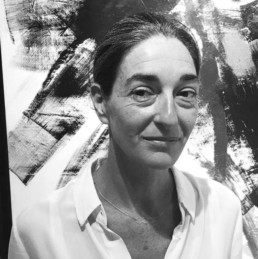
Maud Barral
After 15 years spent as the assistant of the famous gallerist Jean Ferrero, whose gallery has been the main center of creation for the artists of the School of Nice and the Nouveaux-Réalistes movements, Maud has then opened for 5 years her own gallery, supporting contemporary young artists. Then, she has decided to enter the Galerie Hurtebize, in 2015.
50th Antibes Art Fair - From 04.16 to 05.02 2022
50e SALON D’ANTIBES
From 04.16 to 05.02 2022
PLACE
Esplanade du Pré des Pêcheurs, Antibes
PUBLIC OPENING
From 10.30 A.M to 07.30 P.M
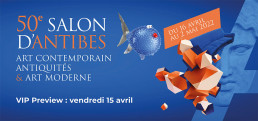
Raoul Dufy, Mon Docteur le Vin, 1936
In 1822, Nicolas revolutionized the world of wine by bottling precious nectars for home consumption.
Since 1930, in order to thank its most loyal customers, Etienne Nicolas publishes every year for Christmas a catalog illustrated by an artist. Today, this long series of 35 books is a real treasure for art and wine collectors. Over the years, Kees Van Dongen, Jean Hugo, Bernard Buffet, André Derain, Bernard Lorjou, Raymond Guerrier and Raoul Dufy, among others, have collaborated in the creation of these brochures.
We recently had the opportunity to acquire an exceptional set of 7 original drawings by Raoul Dufy reproduced in the 1936 catalog published by Nicolas & Draëger Establishment, a famous printer and engraver in Montrouge, entitled “Mon Docteur le Vin“. The 20 watercolors created for the occasion were the subject of an exhibition that same year at the Galerie Bernheim-Jeune in Paris. We also found an original edition of the book, signed by Dufy.
From the first page, the tone is given: “My Doctor the Wine? Yes, because his precepts, as old as the world, are justified more and more each day by science. After the First World War, Marshal Pétain, in his introduction “Homage to Wine”, indicates that “wine has been, for the combatants, the beneficial stimulant of the moral forces as well as the physical forces – thus it has largely contributed, in its own way, to the Victory”. And the benefits of wine are listed in the summary: vitamins and radioactivity of wine; wine against typhoid fever, depression, anemia, diabetes or obesity; wine for the kidneys, the maintenance of youth and aesthetics, character and morale; indispensable to writers, artists and athletes. And finally, wine makes men handsome and promotes longevity! The quotation of Professor P. PIERRET will serve as a conclusion: “Wine carries with it cheerfulness, strength, youth and health. It is sunshine in a bottle”. So, who better than Raoul Dufy to illustrate such a book?
« If I could express all the joy that is in me » Raoul Dufy
Painter of optimism, festivity and worldliness, Raoul Dufy has a marvelous look at the world and transmits through his colorful and poetic painting, a joyful feeling of well-being and life. As Pierre Camo says so well in “Dufy, l’Enchanteur” (ed. Marguerat, 1947) “Everything is fresh, lively, clear, joyful like spring in nature or youth in life”. The titles given to exhibitions and various tributes dedicated to the artist testify to this: “Raoul Dufy. Le Plaisir” (Museum of Modern Art, Paris, 2008); “Raoul Dufy. A Spectacle of Society” (Connaught Brown Gallery, London, 2016); “The Colors of Happiness” (Jean Cocteau Museum, Menton, 2017); “The Lightness of Raoul Dufy” (Angladon Museum, Avignon, 2017).
His style corresponds exactly to the spirit of “Mon Docteur le Vin“, a work linking humor, finesse and precision.
At the age of 13, the young Raoul imposed his choice to become a painter on his family of musicians and left his native Normandy to train at the Ecole des Beaux-Arts in Paris. Influenced at first by the Impressionists and then by the brilliance of color in the Fauves, he admired Cézanne more than anyone else and it was in the Provençal lands dear to Cézanne that he found his own language and developed his principle of “light-color”.
"In 1919 Dufy suddenly became Dufy. The hand is freed, his line gains in flexibility and strength. Above all, he devoted himself to watercolor, which allowed him to render the beauty of the landscapes of Provence, their transparencies and their lights. (...) His painting acquires a new dynamism. The forms gain in lightness and balance. His drawing is faster, more exalted. He feels a desire to create which reflects all his joy of artist conscious to have reached maturity and all the happiness of a world henceforth liberated ".
Fanny Guillon Laffaille
The essential characteristics of Raoul Dufy’s style were born and would never leave him: dissociation of line and color; sketched but dynamic and lively figures; chubby and voluptuous curves; simple, supple and expressive lines; flamboyance of color that becomes light. In 1936, the year of the publication of “Mon Docteur le Vin”, Dufy was already known worldwide and had personal exhibitions in New York, Brussels, Prague…
Endowed with an exceptional gift of drawing and coloring, it is through drawing and more precisely through watercolor that he reveals his true talent and releases his lively and graceful gesture. From the 1930s, Dufy gave more and more space to his graphic work and worked on the possibilities offered by the use of his “puddles of color” that precede his line.
"Any drawing by Raoul Dufy is in some way his signature
and what is agreed to call inimitable signature."Jean Cocteau
Raoul Dufy does not seek to represent materiality but offers a very free and subjective interpretation of his subject where reality and imagination intersect. If one finds recurring themes and motifs in his work (orchestras, landscapes, portraits, horse races…), the artist is eclectic and expresses himself through various media, multiplying experiences: drawing, painting, sculpture but also decorative arts, illustration, tapestry, sets and costumes. His calligraphic surety, the simplicity and purity of his subject, his extraordinary sense of composition, the suppleness of his lines and the brightness of the colors dissociated from the line will remain recognizable among all, whatever the chosen support.
A relentless worker, he produced no less than 4,000 drawings and 2,000 paintings, among other ceramics, fabrics, tapestries… a fruitful career if ever there was one, and success and international recognition were at hand! One year before his death, in 1952, the XXVIth Venice Biennale awarded him the Grand Prize for Painting to crown his work.
Discover an extract of the book “Mon Docteur le Vin”.

Maud Barral
Après une expérience de 15 ans passés aux côtés de Jean Ferrero, directeur de la galerie historique de l’École de Nice et des Nouveaux Réalistes, Maud a ensuite défendu la jeune création contemporaine durant 5 ans, au sein de sa propre galerie, avant de rejoindre l’équipe de la Galerie Hurtebize en 2015.
BRAFA Art Fair - From 06.19 to 06.26 2022
BRAFA EDITION 2022
From 06.19 to 06.26 2022
PLACE
Brussels Expo I Heysel, Place de Belgique 1, 1020 Brusselles
PUBLIC OPENING
From 11A.M to 7P.M
Venet's drawing
Bernar VENET, a French artist born in 1941 and living between France and the United States since the 1960s, is today known worldwide for his sculptures and recognised for his monumental installations in the public domain.
We would like to focus here on another part of his compositions: his graphic work. We will base this article on two works on paper recently acquired by the gallery, which perfectly illustrate the importance of drawing in the sculptor’s creative process.
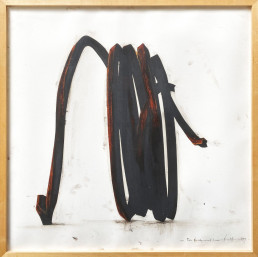
Bernar VENET – Two Undetermined Lines, 1989 – Oil pastels on paper – 76.2 x 76.2 cm
“First, I have a vision. Then I make a small drawing with the main precaution being the question of proportions “.
From his first artistic experiences, Bernar VENET gives the drawing a predominant and omnipresent place. From mathematical formulas written with ink on large papers, to industrial technical diagrams presenting the physical characteristics of an object produced and shown at the same time in volume, Venet’s graphic works are inseparable from his sculptures.
Like many artists, drawing is the first stage in Bernar Venet’s work and he will build his sculptural project through it. Moreover, the sculptor can be felt behind each of the artist’s sketches: the relief and perspectives make each drawing a wall sculpture. The flat work seems to be already present in volume, it seems to come out of its frame. Here, the preparatory drawing is not a sketch but a fully-fledged, finished work that stands on its own and presents us with the essence of the subject to which Venet will give life. The movement, relief, texture and colours of the pastel give us the grainy, rusty aspect of the Corten steel that will constitute the material of the sculpture to be born. The attention is already entirely concentrated on the form, no superfluous detail disturbs the eye. Ingres gave this advice to his students: “Have the figure you want to represent entirely in your eyes and in your mind, and let the execution be nothing more than the accomplishment of this already possessed and preconceived image”. With a lively, sober, powerful and elegant gesture, Venet goes straight to his goal, follows his Line, a central element of his work since the 1960s, the volume of which he already feels, and remains faithful to what he calls the principle of equivalence, which makes it possible to transmit the same content through different channels.
The second stage is the casting of the sculpture in black or Corten steel according to the drawing. Then, in a third step, the artist will try to give yet another vision of his work, this time from a photographic view of his sculpture.
In Venet’s case, there is an absolute circularity between drawing, sculpture and photography. The form and its metaphors are contiguous and reflect the artist’s desire to achieve the absolute object, one whose aspect refers only to itself without expressiveness, totally neutral, depersonalised. This was already the aim of Bernar Venet during his first artistic experiments based on the use of diagrams and mathematical formulas, or also through his performance around the “coal pile”: “The charcoal, placed freely in a heap, freed the sculpture from the apriorities of the composition imposed by the artist. The material, always poor (coal, tar, steel…), used for its own capacities, decides on its own form which will be different with each use, thus allowing the artist’s personality to disappear behind his work. Through the raw and industrial materials he chooses, Venet further emphasises the radical and self-referential nature of his research: the work must speak only of itself and not of the artist. It is on this monosemia principle that he has based his thinking since the beginning.
Bernar VENET – Indeterminate Line, 2016 – Photograph and charcoal on paper – 220 x 153 cm
This Indeterminate Line, created in 2016, is entirely representative of the style and strength of Venet’s work: at once minimal and monumental, even colossal, the line takes over the space with its presence and movement. Here we are faced with what could be described as the third stage of his work: after the preparatory drawing and the making of the sculpture, the artist seeks to give another vision of this volume. He then chooses an angle of view which he fixes photographically and reworks into a flat. The photo is then cut out following the contours of the sculptural form, pasted onto a large white paper and reworked with charcoal. This tool, made from charcoal (well, look at that…), used since prehistoric times in cave art, which is as raw as it gets, is generally associated with preliminary work because it is very easily erased. Here again, Venet goes against the grain. He glorifies charcoal through its use in the final work. The specific characteristics of charcoal allow him to add depth to his work and to play with light by varying the value of the black, more or less blurred. The rough and raw texture of charcoal can also recall the feel of steel. And the circle is complete!
«Expanding the field of the visual world»
Bernar Venet became an artist at a time when lyrical abstraction was exploding in France and conceptual art in the United States. He did not adhere to these movements and sought something else to broaden the field of creation. He therefore found his inspiration elsewhere, in disciplines outside the art world such as mathematics, geometry and physics.
His work will develop around a theme: the Line, which will become straight, curved, indeterminate before being transformed into Arcs and Angles. From the outset, his work was radical, even austere, compared to the generally lyrical and colourful abstract art of the 1960s. Using black and industrial materials, with a minimal and deliberately inexpressive gesture, he wanted to achieve the absolute object, one whose form would refer only to itself and not to the artist’s “style”. He remained faithful to the initial principles of his creation (principle of equivalence, refusal of aesthetics and monosemia principle) on which he based a protean work: paintings, sculptures, drawings, photographs, architecture, poetry, sound works, films…
A major artist of conceptual and minimal art, the father of informal art born with his “coal pile “, Bernar VENET is today present in some sixty museums throughout the world and receives numerous public and private commissions for permanent and often monumental installations.

Maud Barral
After 15 years spent as the assistant of the famous gallerist Jean Ferrero, whose gallery has been the main center of creation for the artists of the School of Nice and the Nouveaux-Réalistes movements, Maud has then opened for 5 years her own gallery, supporting contemporary young artists. Then, she has decided to enter the Galerie Hurtebize, in 2015.



